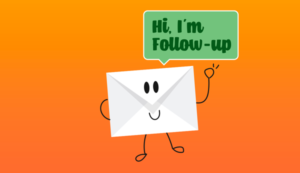Email prospecting is one of the most effective ways of reaching your target market. But to be truly effective, you need to start thinking of your potential customers. That means saying goodbye to bad practices (like spam mails), and, instead, welcoming strategies that help cultivate relationships. A good business keeps customers coming back, after all.
Of course, tools are still your friend. You just have to know how to use them effectively. Email templates, for example, can only get you so far if you don’t know how to properly sustain communications with a customer. So, before you start writing a sales email or two, you need to remember a few key rules first:
- Emails should never be about you. Make it about the customer.
- Craft personalized emails. Know more about your prospect.
- Make it easy to read. Use conversational language.
- Be concise; make it short.
- Always follow up.
- Don’t be afraid to use email automation tools.
Are you ready? Then let’s put these rules to practice. Here are 10 sales email templates that can yield better engagements!
1. Breaking the Ice

Sending an introductory email is the simplest sales email that you could send out. But instead of directly discussing your company or services, try finding some common ground between you and your prospect. It’s a good way to break the ice!
2. Flattery Goes a Long Way

You’d be surprised just how much information you can dig up on a prospect. Company websites, social media profiles, and even news articles can easily give you deeper insight into them. And one of the best ways to use that information is by flattery! No, we’re not kidding.
Figuring out how you can congratulate them is the key here. Look for certain trigger events in their professional lives that you can use. Did they just get funding for a major project? Did their company just hit a new milestone? Use these to your advantage!
Important note: Never dig too far and get too personal! If you start babbling about how great their children did at a school recital, even though you weren’t there, it just comes off as creepy!
3. Prospects Go for Immediate Value

Another way you can ensure better engagements is by offering immediate value to your prospect. Whether it’s a product or just your expertise, a prospect will most likely take you seriously if it’s something they will immediately benefit from.
That said, if you’re going to be critiquing their services/website, you might want to tone it down. You don’t want to insult them, do you? Leading with some compliments can go a long way here.
4. Follow Up on Website Visitors

You can learn a lot from a prospect’s browsing behavior. If they visit your website or leaves a message, this shows that they are interested in your product or service. Strike while the iron is hot! Offer guidance or introduce them to your company.
5. Reach Out if Customers Request a Demo

It’s important to always find ways to nurture your relationship with customers/prospects. One way to do just that is by reaching out to them when they request a demo of your product.
And no, we don’t mean sending an obvious pre-written automated response! Again, personalize and create an opportunity for conversation.
6. Reach Out if Customers Are on a Free Plan or Trial

Alternatively, you can also reach out to customers who are already in the middle of their free trials. This strategy is perfect if your company does not customize demos for each customer. Or, if your company offers free plans, this could come in handy, too.
7. Share Your Content

It’s a cliché, but the saying “sharing is caring” can help you boost sales. It’s important to have shareable—and, of course—valuable content on hand that you can send to your contacts. Your content becomes even more valuable if it targets a specific issue you feel your contact needs to address.
8. Follow Up if They Opened Your Email but Never Replied

Never let an opened email that’s been left hanging discourage you. The fact a prospect opened it—and read it—in the first place means that they are interested. But they may either be busy or simply not interested enough. It’s your job to convince them that what you’re selling is worth their while. Now’s your chance to truly hook them in!
9. Follow Up Even if They Still Don’t Respond

Your follow-up didn’t work? There’s one more strategy you can try: follow up again! By this point, however, it’s important that you tread lightly. Being too pushy when they’ve already ignored two of your emails is risky. Instead, you can try sending helpful resources their way. You’re still offering them value while gently reminding them of your product/service. It’s a win-win!
10. Last Chance

If your prospect has completely ignored your emails, try reaching out one last time. Provide something useful and try going for a light-hearted approach. Most importantly, write your email in a way that gives the prospect a chance to change their mind. Don’t be pushy or even resort to guilt trips!
Conclusion
These templates aren’t the be-all-end-all of sales email templates. Nothing is ever going to work 100% of the time, every time. You can alter these to your liking and they might become more effective. Or not. Just remember that the goal is to provide value to your prospect/customer. If you keep that in mind, building a lasting relationship with them becomes easier.
